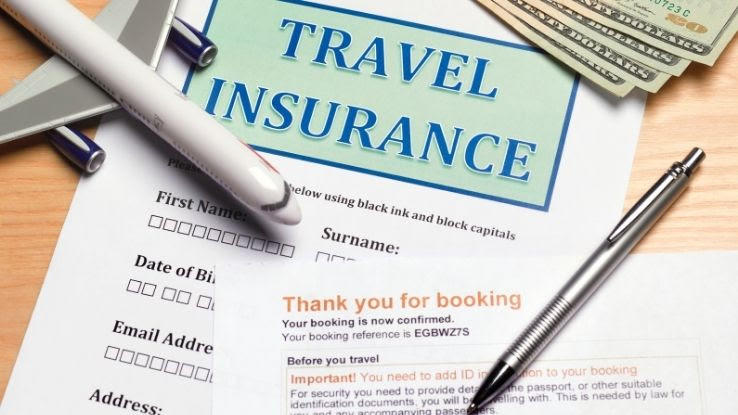Not known Details About Pacific Prime
Not known Details About Pacific Prime
Blog Article
The Ultimate Guide To Pacific Prime
Table of ContentsRumored Buzz on Pacific PrimeAll About Pacific PrimePacific Prime for BeginnersThe Basic Principles Of Pacific Prime The 2-Minute Rule for Pacific Prime

This is since the data were gathered for a duration of strong financial performance. Of the approximated 42 million individuals who were without insurance, just about about 420,000 (regarding 1 percent) were under 65 years old, the age at which most Americans become eligible for Medicare; 32 million were adults in between ages 18 and 65, about 19 percent of all grownups in this age group; and 10 million were kids under 18 years old, concerning 13.9 percent of all youngsters (Mills, 2000).
These price quotes of the number of persons uninsured are created from the yearly March Supplement to the Present Population Survey (CPS), performed by the Census Bureau. Unless otherwise noted, national quotes of people without health insurance policy and proportions of the population with various kinds of coverage are based on the CPS, the most extensively utilized resource of estimates of insurance coverage and uninsurance rates.
How Pacific Prime can Save You Time, Stress, and Money.

Still, the CPS is especially useful due to the fact that it creates yearly quotes relatively quickly, reporting the previous year's insurance policy protection approximates each September, and because it is the basis for a regular set of estimates for greater than twenty years, enabling evaluation of fads in protection over time. For these reasons, in addition to the substantial use the CPS in various other researches of insurance policy coverage that are presented in this report, we rely upon CPS price quotes, with constraints noted.

The price quote of the number of without insurance people increases when a population's insurance standing is tracked for several years. Over a three-year duration starting early in 1993, 72 million people, 29 percent of the united state population, were without coverage for at least one month. Within a single year (1994 ), 53 million individuals experienced a minimum of a month without insurance coverage (Bennefield, 1998a)
6 out of every 10 uninsured grownups are themselves utilized. Although working does boost the chance that and one's family participants will have insurance, it is not an assurance. Also participants of family members with two permanent breadwinner have virtually a one-in-ten opportunity of being uninsured (9.1 percent without insurance price) (Hoffman and Pohl, 2000).
Pacific Prime for Beginners
New immigrants make up a considerable percentage of individuals without health and wellness insurance. One analysis has actually connected a significant part of the recent development in the dimension of the U.S. uninsured population to immigrants that got here in the nation in between 1994 and 1998 (Camarota and Edwards, 2000). Current immigrants (those that involved the United States within the past four years) do have a high rate of being uninsured (46 percent), but they and their kids account for just 6 percent of those without insurance country wide (Holahan et al., 2001).
The connection between medical insurance and access to care is well developed, as recorded later in this chapter. The partnership in between health and wellness insurance coverage and health and wellness outcomes is neither straight neither easy, a substantial scientific and health and wellness solutions research study literature links wellness insurance coverage to better accessibility to care, much better quality, and boosted individual and populace health standing.
Degrees of analysis for taking a look at the impacts of uninsurance. This discussion of medical insurance protection concentrates mainly on the U.S. population under age 65 because virtually all Americans 65 and older have Medicare or various other public protection. Furthermore, it concentrates specifically on those with no medical insurance for any size of time.
The Definitive Guide to Pacific Prime
The troubles dealt with by the underinsured are in some respects similar to those encountered by the uninsured, although they are generally much less serious. Health insurance, however, is neither essential nor sufficient to get accessibility to medical solutions. The independent and direct result of health and wellness insurance policy protection on access to health solutions is well established.
Others will get the wellness care they require even without medical insurance, by paying for it out of pocket or seeking it from carriers that offer treatment cost-free or at highly subsidized rates. For still others, medical insurance alone does not ensure receipt of treatment since of various other nonfinancial obstacles, such as an absence of wellness treatment suppliers in their community, minimal access to transport, illiteracy, or linguistic and cultural distinctions.
See This Report about Pacific Prime
Formal research study regarding without insurance populaces in the USA dates to the late 1920s and very early 1930s when the Board on the Cost of Medical Care produced more info here a collection of reports about financing physician office brows through and hospitalizations. This issue ended up being prominent as the numbers of medically indigent climbed up throughout the Great Clinical depression.
Report this page